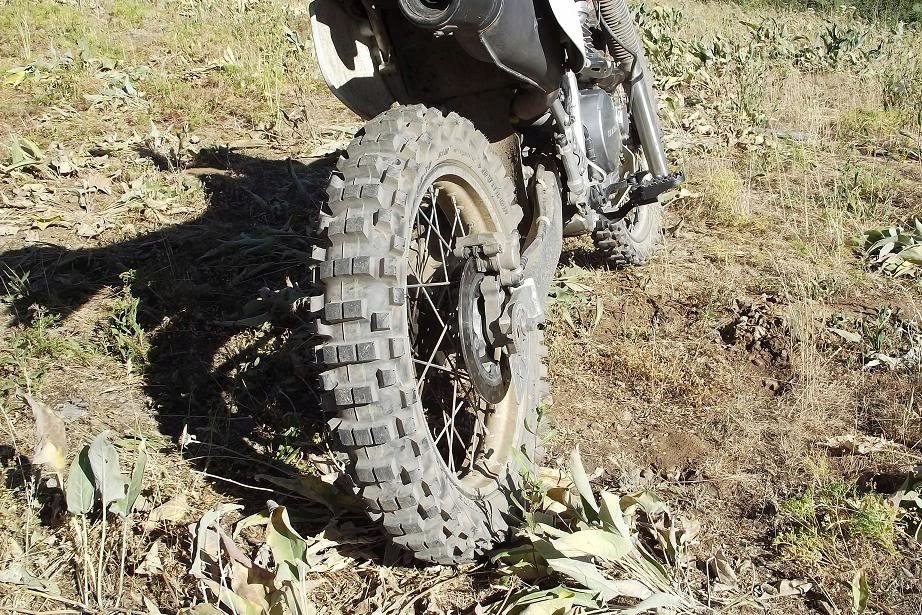The Evolution of Dunlop Tires
Hey everyone! I wanted to share some insights about a tire that I recently got my hands on. If we rewind to the 2000s, the Dunlop 756 reigned supreme in my list of favorites. Interestingly, this tire was introduced as a successor to the Dunlop 752. Now, Dunlop has taken inspiration from the 752 to design a new tire.
Although I wasn’t particularly fond of the original 752, Dunlop’s innovative approach to reinforcing the knobs on their latest version piqued my curiosity.
Comparing Dunlop with Current Favorites
To give you an idea of the specifications, this new tire is tagged as the 128 e18.
Its sidewall is notably 10 millimeters shorter than the tire I’ve been using, which is the m5b IRC with a designation of 138 II 18. Now, the traction on my current tire is commendable. It has that gummy feel due to its soft nature, which provides excellent grip. The Dunlop, on the other hand, brings in a noticeable firmness in its knobs, a stark contrast to the softness of the m5b IRC.
The Rigidity of the New Dunlop
Delving deeper into the texture and feel, the sidewalls of the new Dunlop are also significantly more rigid. My only gripe, which is more of a personal preference, is the softness of the sidewall. I tend to ride with slightly reduced tire pressures, and this particular trait seems to amplify the softness, which isn’t ideal for my riding style. For better clarity and a more direct comparison, let’s take a closer look at both these tires side by side.
Introducing the Dunlop 952
The Dunlop 952, upon first glance, boasts a classic 3-2 knob pattern, a feature that many enthusiasts would instantly recognize. The side knobs extend quite a distance downward, and the sidewall features a distinctive deep rim protection. What stands out with this tire, however, is its all-around stiffness – a characteristic that I’ve been gravitating towards when considering tires recently.
Comparing with the m5b
On the other hand, we have the m5b, which has been my tire of choice for some time. To be fair, I don’t have many complaints about it. In fact, it’s held up surprisingly well, more so than I anticipated. In terrain devoid of many rocks, its wear and tear have been minimal. Yet, when pitted against others like the met slurs, it might not be an apple-to-apple comparison. But there’s one aspect that I find less than perfect – the sidewall. It’s just too soft for my liking, and its profile is somewhat more elevated than the Dunlop 952.
Putting the Dunlop 952 to the Test
The real measure of a tire, of course, is how it performs out on the track. With that in mind, I’m gearing up to test the Dunlop 952 on a friend’s property. The terrain there does present some rocky challenges, offering an opportunity to really gauge what this tire is capable of under more demanding conditions.
Evaluating the Tire’s Durability
It’s always intriguing to see how a tire holds up under varied conditions. The true test of endurance lies in observing how the knobs fare over time. As someone who loves delving into the intricacies of tire performance, I am committed to monitoring the tire’s progression and will keep sharing updates with fellow enthusiasts.
Pro Tip for Effortless Tire Mounting
For those who frequently find themselves in the position of mounting tires, I have a handy trick up my sleeve that I’d love to share. Before attempting to mount any tire, consider placing either an old or new inner tube inside it. Once inside, inflate the inner tube. This simple step ensures that the inside of the tire expands, making the subsequent mounting process notably smoother. No longer will you find yourself struggling to fit the tire onto the rim or having to wrestle with the tire to get it into place. This method offers a more streamlined, efficient approach to the tire mounting challenge.
Wrapping Up Tire Insights
Understanding the intricacies of tires, from their durability to mounting techniques, is crucial for every motorbike enthusiast. The durability of knobs can make a significant difference in the overall riding experience. Furthermore, knowing handy tricks, such as the inner tube inflation method, can save both time and frustration. As we venture deeper into the world of tires, it’s always beneficial to share knowledge and tips with the community. Through collective experiences and insights, we can all make more informed decisions about our bikes. Stay tuned for more updates and keep riding safely!





